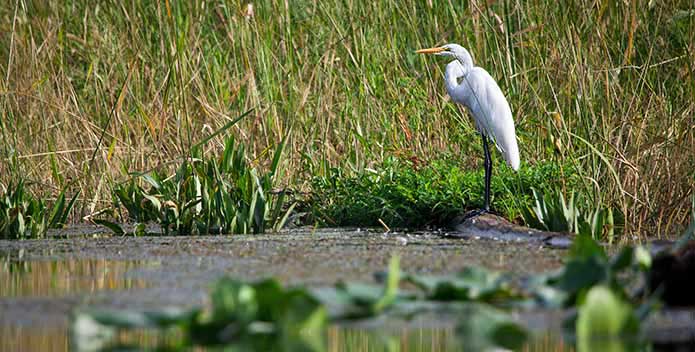You've been hearing a lot lately about the proposed federal budget and how it will affect Chesapeake restoration. We know it's confusing. That's why we asked CBF's Federal Policy Director Alix Murdoch to break it down for us. Here's what she had to say:
Here is the skinny on the FY18 federal budget request: The federal government is fully funded until September 30, 2017. Tomorrow, the White House will submit its full budget request for next Fiscal Year, FY2018 (October 1, 2017–September 30, 2018), to Congress at 11: 00 a.m. and OMB Director Mulvaney will testify in support of it. There will be two types of documents released—an updated narrative document that will be similar to the 64 page 'skinny budget' that was released on March 16 and an Appendix with detailed funding tables by agency and line item well over 1,000 pages long.
Why is it important? Usually the President’s Budget request is treated with great deference by Congress and is the baseline in their deliberations. Members must use political capital to negotiate changes (increases or decreases) so they must choose what they will fight for or against carefully. Members will need to argue that the Bay Program must be fully funded and engage in negotiations to ensure that happens.
Here are the next stages of the process for funding the Bay Program:
- The House and Senate subcommittees will hold hearings on EPA's budget request and Administrator Pruitt will testify. (Hearing dates TBD, any time after 5/23)
- Then they will write and release the appropriations bills that will contain their proposed funding levels for the Chesapeake Bay Program and will hold hearings to pass their bills out of committee.
- Finally, the House and Senate must hold votes and pass their EPA funding bills and work out any differences.
How does this process connect to the funding vote the House and Senate just had? There was another funding process occurring this spring as well: Congress still had to pass a bill to fund the government for the rest of FY17 (May 5, 2017–September 30, 2017) because last year they were not able to come to agreement on a full funding package. Thankfully, Congress successfully passed a bill and fully funded the federal government until September 30, 2017—and provided full funding for the Chesapeake Bay Program at $73M. Unfortunately, this process has been confusing for everyone because it has not been happening in regular order. For general description of how it's supposed to work, click here.



